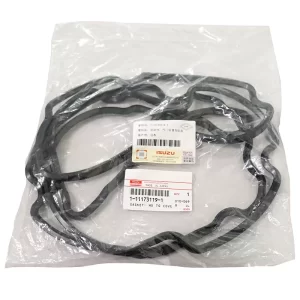A valve cover seal, also known as a valve cover gasket or valve cover grommet, is an essential component of an internal combustion engine. Its primary function is to create a secure seal between the engine’s valve cover and cylinder head, preventing oil leaks and maintaining proper lubrication within the engine. Here is a comprehensive explanation of valve cover seals.
The valve cover is a metal or plastic cover that sits atop the cylinder head, which houses the valves and other critical engine components. It is designed to protect these components from dirt, debris, and excessive heat while also keeping the engine oil contained. The valve cover seal is located between the valve cover and the cylinder head, ensuring a tight seal and preventing oil from leaking out.
Valve cover seals are typically made of high-quality rubber or silicone materials. These materials are chosen for their ability to withstand the high temperatures and pressures that occur within the engine. The seal is precisely engineered to fit the shape and contours of the valve cover and cylinder head, providing an effective barrier against oil leakage.
When the engine runs, oil is pumped from the oil pan to the cylinder head through various channels and passages. The valve cover seal prevents oil from escaping at the point where the valve cover meets the cylinder head. This helps maintain the proper oil level in the engine and prevents oil from dripping onto other engine parts or the ground.
Over time, the valve cover seal may begin to deteriorate due to constant exposure to heat, oil, and engine fluids. As the seal ages, it can become brittle, cracked, or worn out. When this happens, oil leaks may occur, leading to several potential issues. Oil leaks not only result in the loss of engine oil but can also cause engine damage if the oil level drops too low. Additionally, oil leakage can contaminate other engine components, such as spark plugs or ignition coils, affecting their performance.
Replacing a faulty valve cover seal is crucial to prevent oil leaks and maintain the engine’s optimal performance. During a valve cover seal replacement, the old seal is carefully removed, and any residue or debris is cleaned from the sealing surfaces. A new seal is then installed in its place, ensuring a proper fit and seal.
Regular inspection and maintenance of the valve cover seal are essential for detecting any signs of wear or damage. Common indicators of a faulty valve cover seal include visible oil leaks, oil stains on the valve cover or engine block, or the smell of burning oil. If any of these signs are present, it is recommended to have the valve cover seal inspected and replaced if necessary.
In summary, a valve cover seal is a crucial component in maintaining the integrity of an internal combustion engine. By providing a secure seal between the valve cover and cylinder head, it prevents oil leaks and ensures proper lubrication. Regular inspection and timely replacement of the valve cover seal are essential for optimal engine performance and longevity.



